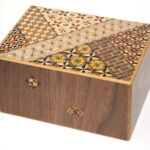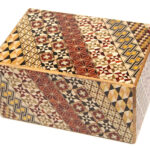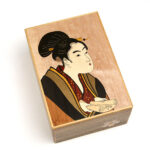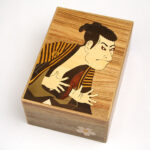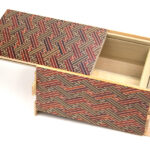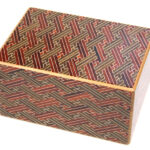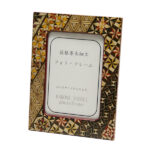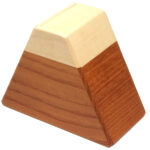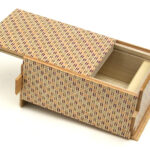—– MAPPING WORLD Interview! Hakone Karakuri Museum —–
The “Hakone Karakuri Museum” has been reborn after renovation
― What is the new collaboration between projection mapping and traditional craft?

The Hakone Karakuri Museum is adjacent to the Hakone Checkpoint, an important historical site in the history of transportation during the Edo period.
This is a very popular tourist destination both domestically and internationally, where you can learn about the beautiful decorations that utilize the traditional Japanese craft “Yosegizaiku” (Yosegi marquetry), touch the secret box that cannot be opened without unraveling the mechanism, and purchase it as a souvenir.
The Hakone Karakuri Museum has been reopened after renovations on March 20th, 2024 (Wednesday). An immersive theater using projection mapping also appeared in the marquetry experience booth on the second floor.
This time, we will talk about the background of the project and the process of creating a space using projection mapping, along with Mr. Ichiro Maruyama (President of HAKONE MARUYAMA Inc., the operator of Hakone Karakuri Museum) and Mr. Takashi Wakui (vice-director and instructor at HAKONE MARUYAMA Inc.), Kei Sato and Kei Yoshida (Sunnana Inc.) and Ayako Shinohara (Colors Creation Co., Ltd.), the 3 staff who were involved in the video production.
Interviewer: MAPPING WORLD Editorial Department
Photo: Philippe H.
About the Hakone Karakuri Museum

─ First of all, please tell us what kind of establishment “Hakone Karakuri Museum” is.
Mr. Ichiro Maruyama (hereinafter referred to as Maruyama): This museum exhibits “puzzle boxes” created by the craftmens of the “Karakuri Creation Group” based on traditional techniques and historical assets passed down in the Odawara and Hakone regions.
Karakuri furnitures, a one-of-a-kind electric secret box, works that you can actually touch and play with, humorous works, and surprising works, etc. are displayed.
─ Please also introduce us “Hakone Maruyama Inc.”, the company that operates it.
Mr. Takashi Wakui (hereinafter referred to as Wakui): Hakone Maruyama Inc. origins lie from Ebisuya (Rickshaw), which was started by the grandfather of the President Mr. Ichiro Maruyama in the early Showa Era (from 1926 to 1989) at Motohakone in the Kanagawa Prefecture, next to the torii gate of Hakone Shrine.
After that, it was passed down to the previous generation and became a shop specializing in marquetry.
With the support of the association’s past master craftsmen, we strive to provide the traditional Japanese craft “Hakone Yosegizaiku”, which is a special product of this region, to as many people as possible, preserve and pass down the traditional culture, and share it with the world.
Marquetry and secret box
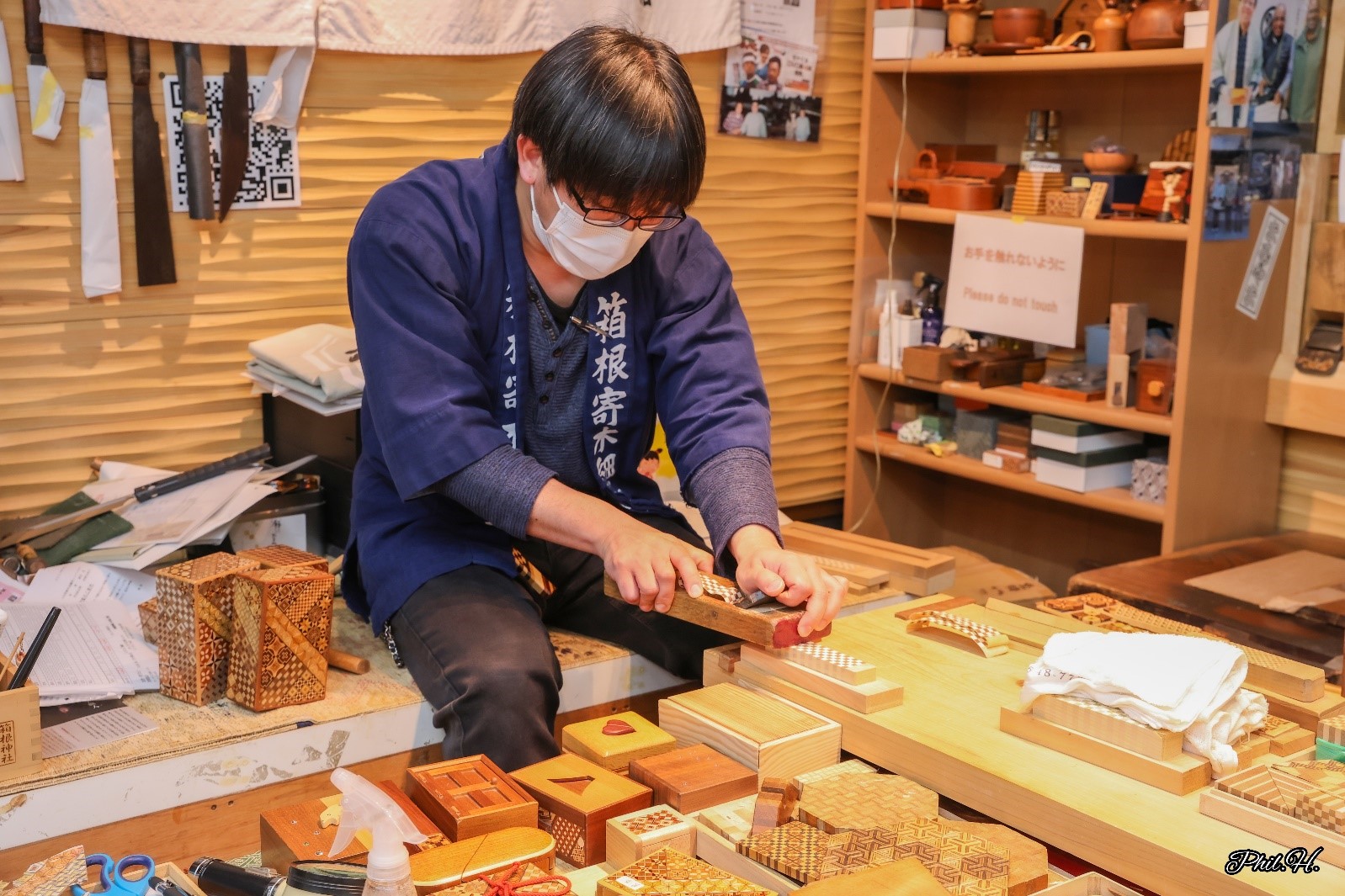
Mr. Wakui shaving the seed plate thinly with a special plane
─ What is the specialty of Hakone called “Hakone Yosegizaiku”?
Wakui:The mountains of Hakone, which were once sung as “The mountains of Hakone are the most precipitous in the country” (expression from the famous folk song “Hakone Hachiri”) are blessed with abundant trees, as they do not easily attract people.
Since ancient times, craftsmen have migrated to the area in search of materials, and they used the potter’s wheel to make tea utensils, trays, and other items called hikimono (turnery), and eventually wood was combined to make items such as boxes and drawers called sashimono (joinery).
The name “Hakone Zaiku” seems to have been popular even before the Edo period, when parquet work began, and it is associated with the rich materials and advanced skills of Hakone craftsmen. It is because of these two support elements that Hakone has developed a unique history with this marquetry.
Hakone Yosegizaiku is a woodworking art that brings out the colors and grains of the many-colored natural woods, and uses a traditional training technique to create highly detailed geometric patterns. There are two manufacturing methods: “zuku”, which is pasted on small shaved boxes, and “muku”, which is difficult to mass produce, in which the seed board of marquetry is processed as is, and the entire thickness of the product is made of marquetry.
Products made using this technique are valuable traditional crafts that have been passed down from the Edo period (1603~1868) to the present in the Hakone-Odawara region, and are unique wood crafts that are unparalleled in Japan.
─ “Secret boxes” are part of the popular souvenirs, but what is their connection to marquetry?

Wakui:A secret box is a box that has a mechanism inside or on its surface that prevents it from opening unless a certain operation is performed. In Japan, the first one is said to have been invented by Mr. Ryugoro Okawa in Hakone at the end of the 19th century.
Since the end of the Edo period, as Hakone developed as a tourist destination, souvenirs with various ideas were created. As a result, many craftsmen have accumulated advanced woodworking techniques and ideas.
The secret box produced in Hakone has decorations on the surface using the Japanese traditional craft technique of marquetry, and this is done at the same time as decoration at the joints of the wood on the surface (due to the mechanism, there are irregularities such as the center of the surface). It also has the effect of hiding the skin (often in its natural position).
Why using projection mapping?
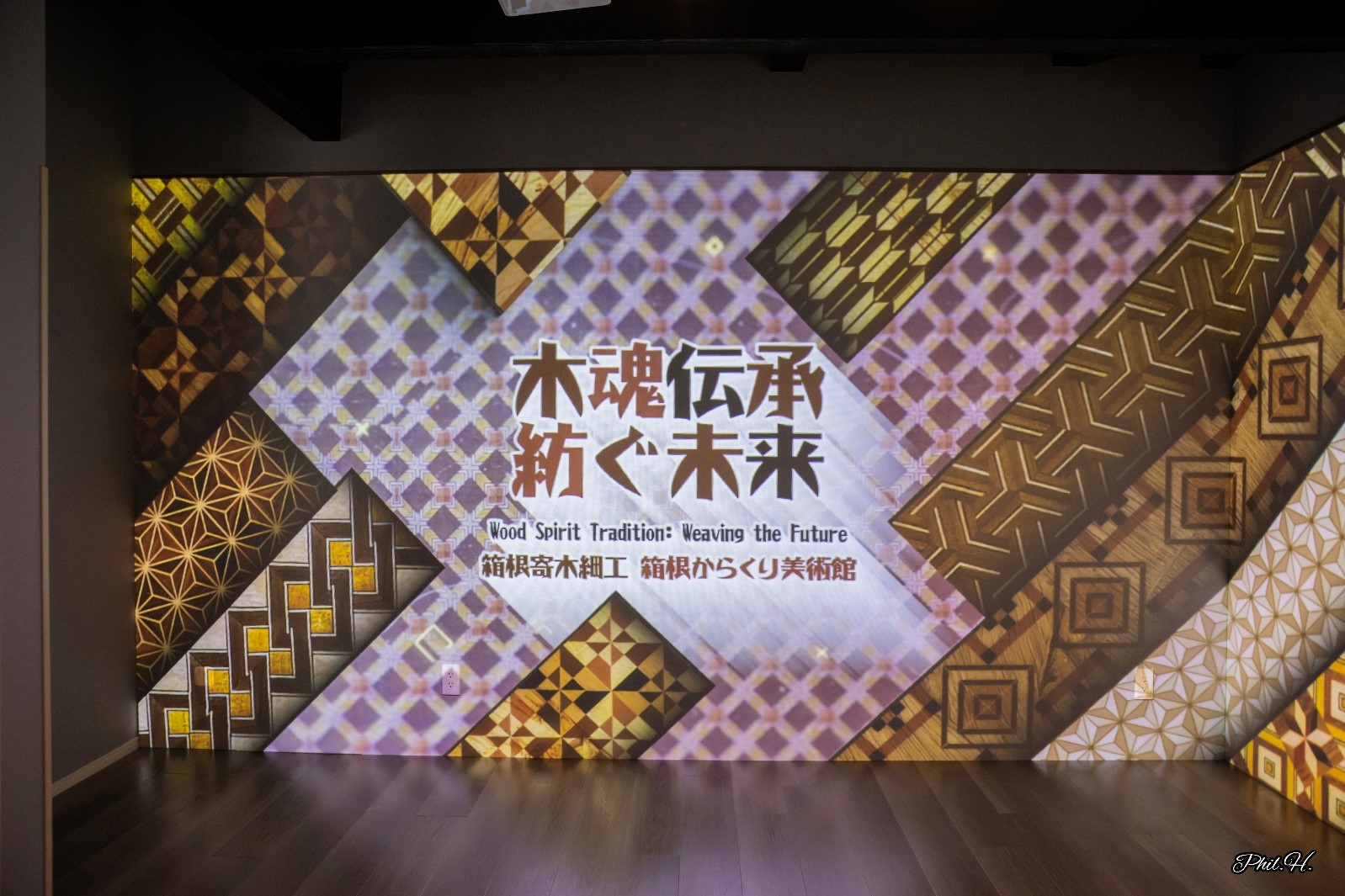
─ Hakone has long been a place where old and new ideas intersect. Is this related to the reason why projection mapping was used this time?
Wakui:This project was completed after four years of planning, based on the idea of President Ichiro Maruyama, “Is it possible to make Hakone Yosegizaiku known to more customers?”.
It came up to our idea of collaborating with projection mapping when, at the beginning of the project, we learned about projection mapping had been done at Odawara Castle and thought it would be possible to collaborate between this modern technology and traditional crafts and it started through the connection of Mr. Hideki Fujii, Director of PMAJ (Projection Mapping Association of Japan).
─ What did you think of the projection mapping video that was projected?
Maruyama:Currently, there are many Japanese people who do not know the origins and history of the traditional Japanese craft Hakone Yosegizaiku. The resulting projection mapping work is a wonderful piece of work that appeals visually and audibly to people both in Japan and abroad who have no knowledge of marquetry, and allows them to share surprise and excitement beyond language.
We asked the creator of the video about their work’s highlights!
We spoke with the members (video: Kei Sato, music; Kay Yoshida) of Sunnana Inc., handled by COLORs CREATION and represented by Ayako Shinohara.
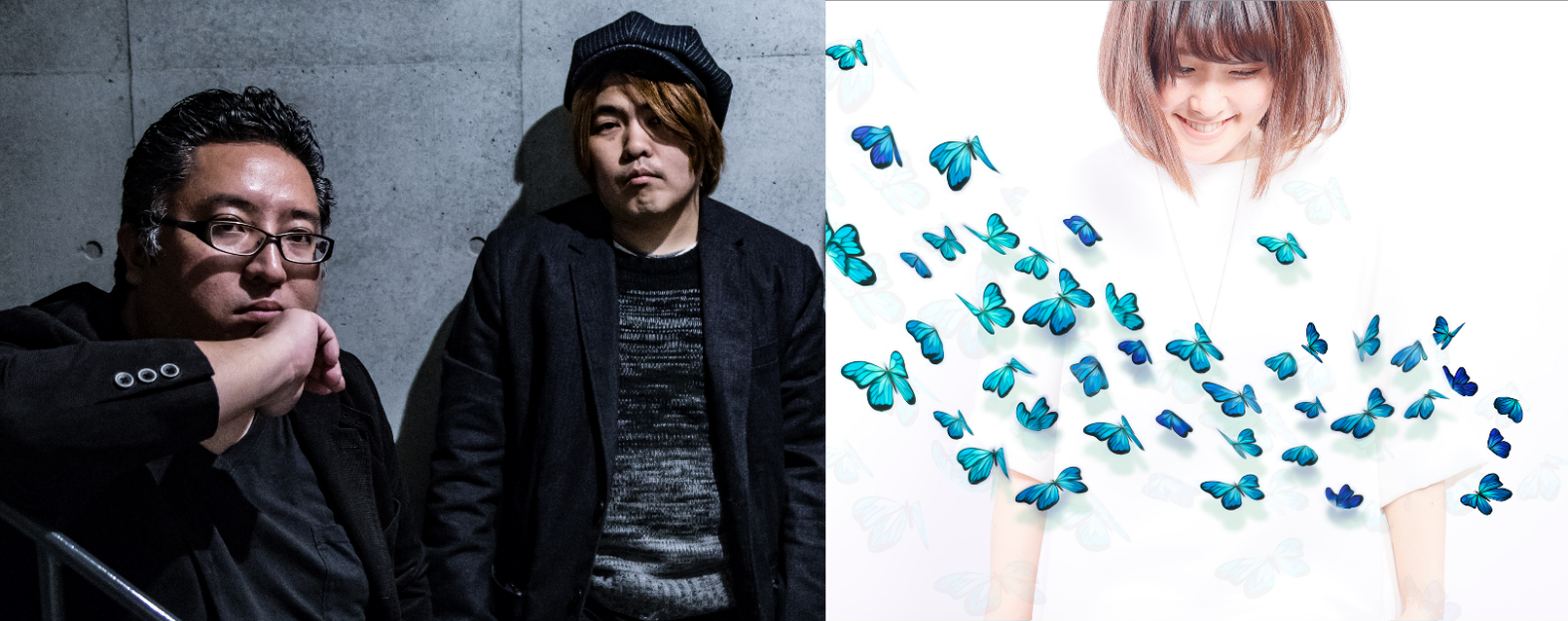
Kei Sato (Left) and Kay Yoshida (Right) from Sunnana Inc. / Ayako Shinohara
─ Please tell us about the worldview of this video work.
Mr. Kei Sato (hereinafter referred to as Sato): The title of this work is “Wood Spirit (Kodama) Tradition: Weaving the Future” and the story is based on the scenery, history, and episodes of Hakone that I visited at the beginning of production.
I felt the spirit of craftsmen who have been passed down from generation to generation through the strength of the various types of trees and the many crafts that have been created. That spirit is born from the trees, converges to form a pattern, and is passed on to the future, creating the future… it includes such stories.
─It was beautiful to see the magnificent world of marquetry unfold at the end.
“A future in which humanity will evolve and converge into a world that relies solely on wood and no longer relies on iron.” There, the town was designed using marquetry techniques, and patterns were engraved on all products.” We described a future in which the spheres of marquetry become a source of energy, and where people live with the clean energy generated from their patterns (circuits), where the air is delicious and the world is peaceful.
─ It’s a very dreamy setting, where the parquet patterns become circuits and generate energy.
Sato: In fact, it is said that if we can convert photosynthesis into electricity, we can realize a future in which we can obtain energy from plants. This is why it is interesting that it does not have an absurd sense of the future.
─ How did you feel about making it using traditional Japanese techniques as a motif?
Sato: During the past years, one of the concepts behind our creations at Sunnana Inc. has been how to incorporate the idea of “Japanese” design into our expressions. As I have been working around the world, I have realized that living surrounded by Japanese design is itself a great strength. I was very honored to be given the opportunity to work on Hakone’s traditional marquetry.
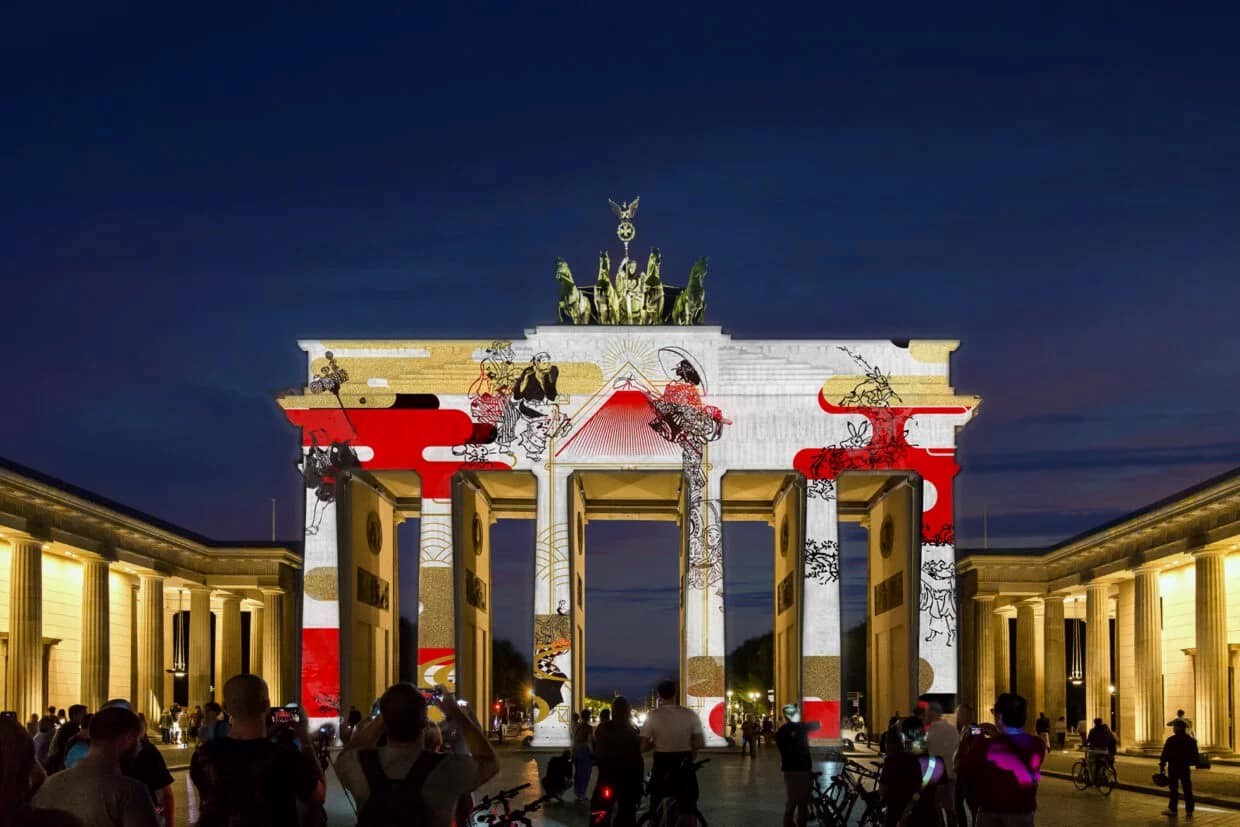
Sunnana Inc.’s work projected on Berlin’s Brandenburg Gate / Festival of Lights Berlin 2023
─ Please tell us what was particular when you produced the video.
Sato: We created textures from photographic materials of patterns made by craftsmen as much as possible to reproduce the real texture.
At first, I was thinking of creating all the patterns in Illustrator or Photoshop, but when I went to the site and saw the craftsmen’s attention to detail in the marquetry, I realized that it would not be easy to imitate them. Of course, we have more opportunities to use it, but as expressions such as AI are increasing, it was a very educational time that reminded us of the importance of incorporating the analog fluctuations of handwork into production.
Ayako Shinohara (hereinafter referred to as Ayako): I have always tried to recreate the delicacy and carefulness of Japanese handiwork.
Geometric patterns and repeating patterns are relatively easy to create on a computer. Rather than simply reproducing a form, I think we were unconsciously trying to understand the meaning and tradition behind it and express it through images.
One of the charms of Hakone marquetry is the warmth of the wood’s texture and color. We worked with Sunnana Inc. to create this part with great care. For this reason, we were particular about reproducing the texture as realistically as possible when expressing it in video.

Ayako Shinohara receives a lecture on marquetry from Mr. Wakui
─ It seems that Ayako was able to find some really cool items at the site.
Ayako: When I work on a project, I usually use the icon of that project as a charm. This time there were earrings made of marquetry. I felt in love with them at first sight when I saw them at the shop. When I was in doubt during production, I would wear these earrings or keep them nearby as I worked.
─ I believe that the approach to deepening the understanding and working towards production will be conveyed to the audience through the work.
Ayako: Before the production began at its fullest, members of Sunnana Inc. came from Kumamoto to the site, and in order to create a work that would be seen and enjoyed by as many people as possible, we went to Kuzuryu Shrine. It was a day when we talked with President Maruyama and Mr. Wakui, and many different images came to our mind. I feel like the team has become even more united since that day. We are proud to have been able to express the beauty and charm of Hakone marquetry, a traditional Japanese craft, through projection mapping images and music.
─The music is a work that harmonizes not only with the video, but also with the facility and neighborhood. I heard that a special “sound” is used there.

Kei Yoshida (hereinafter referred to as Yoshida): Yes, I watched a few videos of the marquetry production process beforehand, but what caught my attention from the beginning was the impressive “sound” of the work. So, we designed the song structure with this in mind from the pre-production stage, and even recorded the actual sounds on site and used them as they were in the song.
─ Specifically, what kind of “sound” did you use?
Yoshida: These are the sounds that occur when creating marquetry work, such as the “swish”’ sound of carving with a plane and the “Kan kan” sound that is made when preparing wood.
─ If you watch the video while being aware of where the sound is being used, you will be able to immerse yourself more in the world of marquetry.
Yoshida: Right, I express what I see and feel when I am there and express it through sound. Images can be recorded, but I believe that sound remains in people’s memories. In addition, the shamisen Tsugaru Jongarabushi part is composed of two parts, but I’ve arranged it to feel like it is with Jrock, so I would be happy if you could get a feel for it.
─ This is also a collaboration between old and new, and has similarities to the history of marquetry and secret boxes.
Yoshida: When it comes to collaborations, my favorite pattern is the hexagonal hemp leaf, but for this song, the main sound uses 6 notes, and the accompaniment phrase is a polyrhythm with a different rhythm. This is the result of being conscious of the precise design of marquetry and the hexagonal design. Also, the song rhythm is in 4/4 time, but the koto has six main tones, which does not seem out of place, but has a unique rhythm.
In fact, the sound of the opening of the secret box is mixed in as is.

─ There are various mechanisms in place here as well! This is a point that you should pay attention to and appreciate. If you have any other recommended elements, please let us know.
Sato: During the meeting, President Maruyama showed me the latest secret box and asked me about the company’s history. At that time, I was shown things like Clover’s secret box and incorporated them into the scene. Please take a look at the actual product along with the video. You will be deeply moved by this wonderful mechanism!

The future that HAKONE MARUYAMA Inc. aiming for
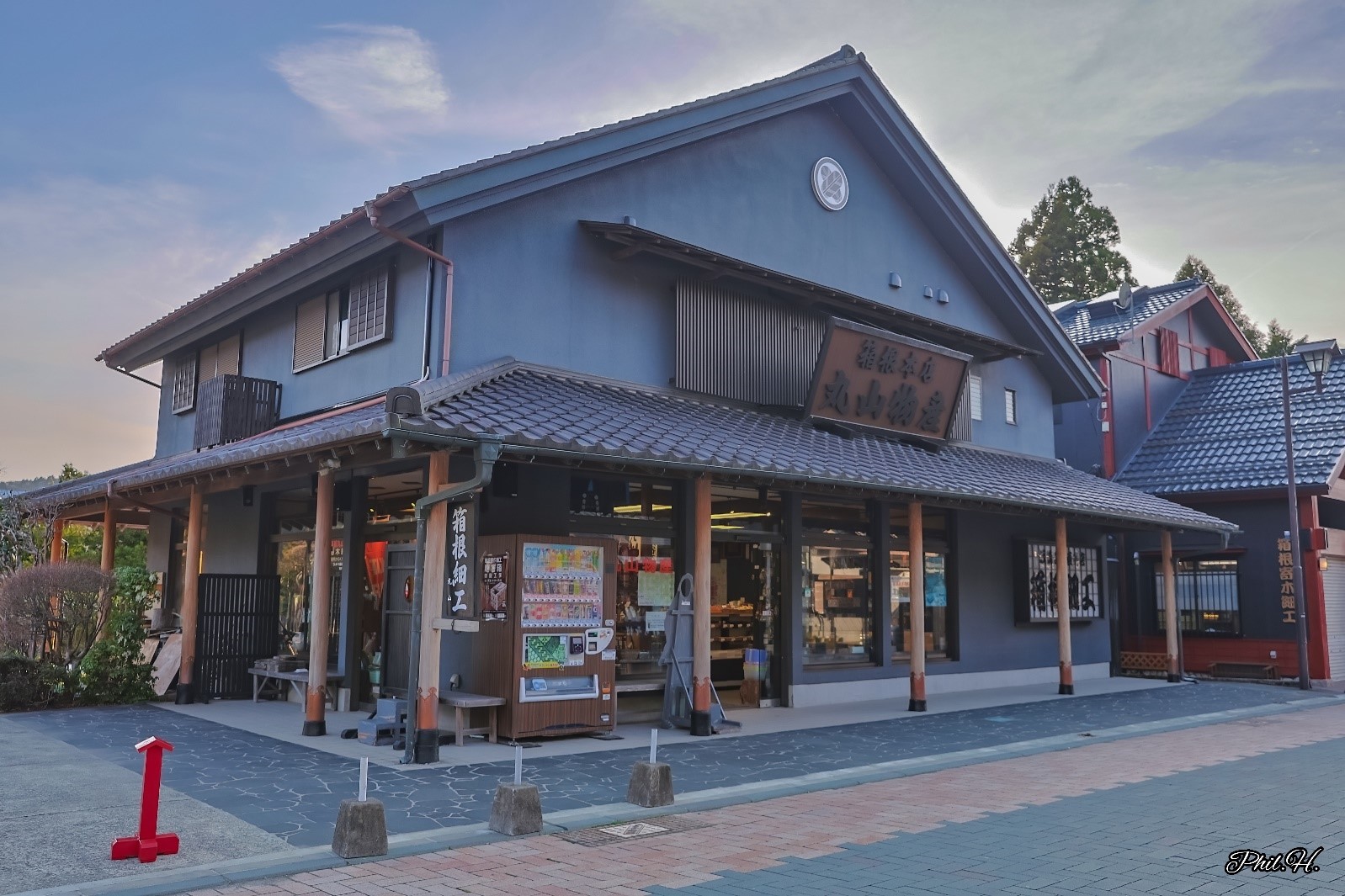
─ The world of Hakone marquetry has always captivated visitors by inheriting traditional techniques from before the Edo period while incorporating the latest techniques of each era. Hakone Maruyama Inc., which plays the role of a missionary, has decided where to go next. Could you please tell us?
Maruyama: In the past, our company has had encounters with various diverse people, starting with Professor Maruyama of the School for the Visually Impaired at the University of Tsukuba, and also at Tokyo Metropolitan Tachikawa Gakuen. We are working on initiatives such as making our facilities barrier-free and using sign language videos, and the people who come to experience the crafts have praised and been impressed by our efforts, and this has become the driving force behind our company. In recognition of these efforts, we won the Grand Prix and the Accessible Category at the Japan Travel Awards 2023.
In the future, we are also considering NFT conversion, which is currently being done by major companies, so that we can focus on value rather than price.
─Hakone has been a land of surprise and excitement for visitors by combining excellent new and old technology with its rich natural environment. We are really looking forward to the new future that will take place, thank you very much.
